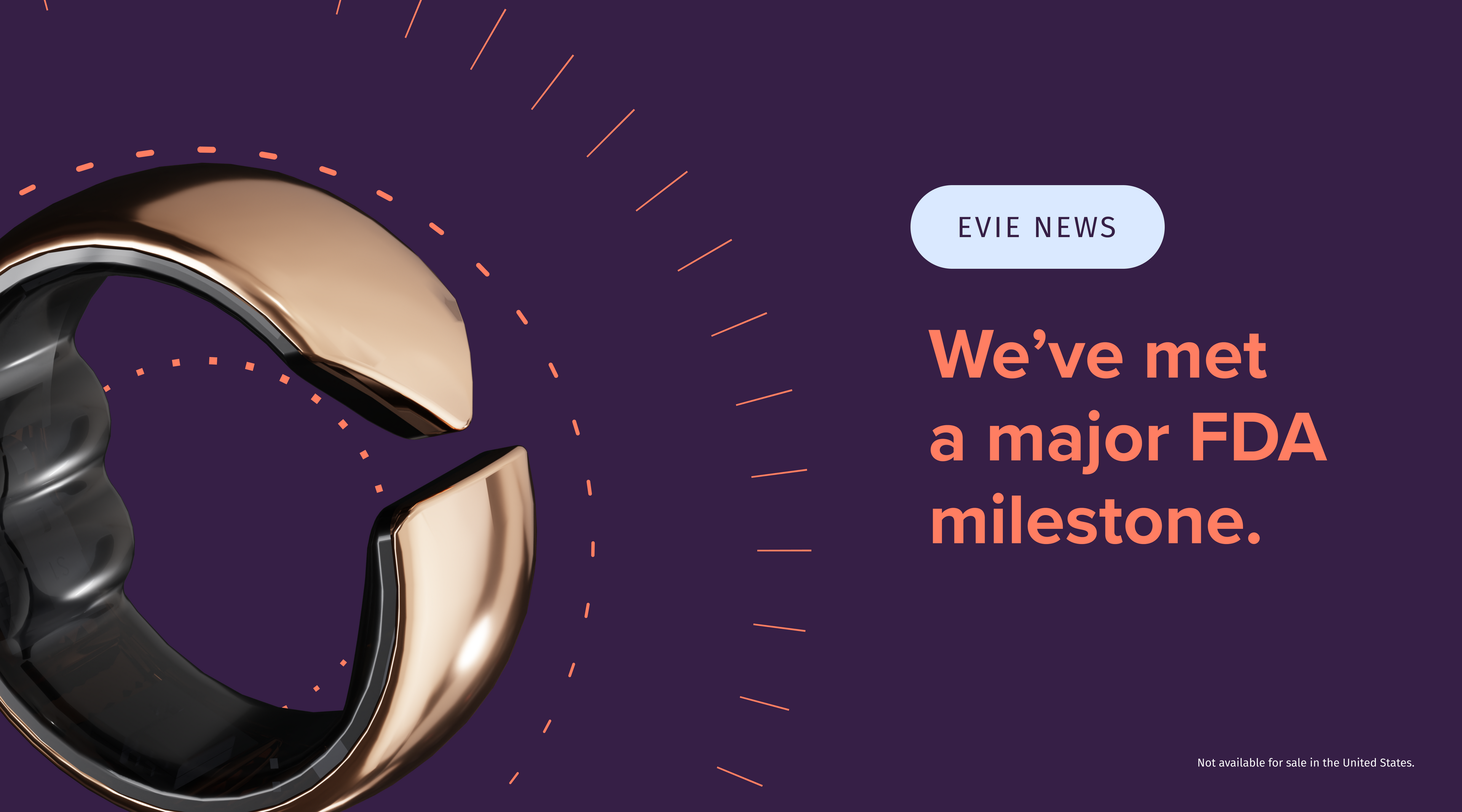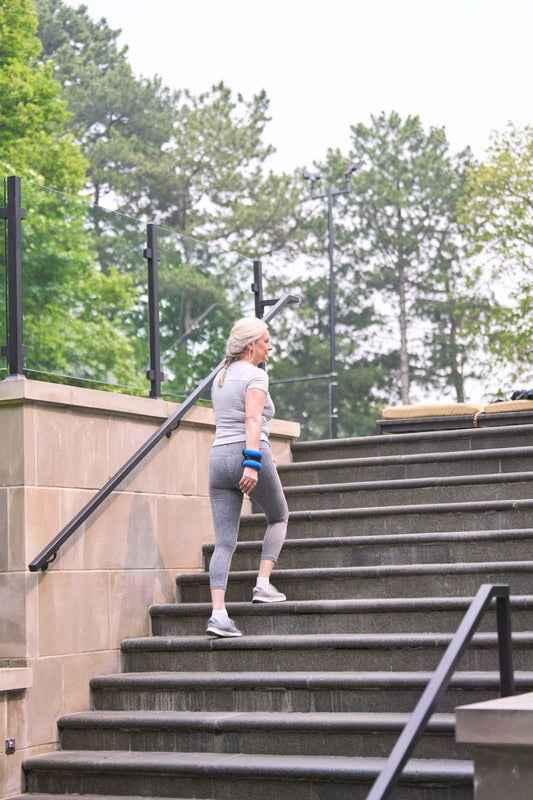Overview
While there was a time when wearables were used primarily to count steps, over the last few years they have become more sophisticated, efficient and compact, and are not only enabling people to be more proactive about their health but are also finding their place within the healthcare industry. In order to accelerate the adoption of wearables both in and out of a medical setting, consumers and medical professionals alike require more confidence in the accuracy of wearable health data. The best way to deliver this accuracy is to seek FDA clearance for device metrics.
We recently submitted our first 510(k) application to the U.S. Food and Drug Administration (FDA) for FDA medical device clearance on Evie’s pulse oximeter, which includes heart rate and blood oxygen saturation (SpO2) data. The submission has passed the first milestone of the review process, an initial review for completeness, and is now under full review by the FDA. This marks a major milestone toward our goal of becoming one of the first consumer wearable devices that is also cleared for clinical use.
The Evie Ring will provide medical grade data you can trust to use in conversations with your healthcare team, coaches and family members to help connect the dots between how you feel and what is going on in your body. Read more in this press release.
Evie’s Clinical Results Exceed FDA Standards
One of the most critical components of the FDA submission is the ring’s performance in clinical studies. We recently completed a successful clinical trial with a prestigious university to assess the accuracy of Evie’s SpO2. In comparing the overall accuracy of the ring's data with data from arterial blood gas data, the Evie Ring resulted in an approximate 2% margin of error, well below the FDA guidance of 3.5% for SpO2. In a separate nonclinical test completed for pulse rate accuracy per the standard and FDA guidance, the Evie Ring margin of error was 1 beat per minute (BPM), also exceeding FDA’s requirements. 
Following our decision to file for FDA clearance on Evie's pulse oximeter, we have provided answers to a handful of important questions you may have below:
FAQ
When do you expect to receive a decision from the FDA? Does the FDA’s decision impact your planned launch timing?
We expect to hear from FDA on Evie’s pulse oximeter submission within 6 months from our submission date. We are prepared to launch the Evie Ring as a wellness device if we have not received a decision from the FDA by our planned launch.
If received, what would clearance mean for Evie?
If Evie receives FDA clearance as a medical device, it would become one of the first consumer wearables devices to have clearance from the FDA. It demonstrates that we’ve fulfilled rigorous FDA requirements for our ring and algorithms to achieve the highest accuracy standards and positions Evie as a trusted device for both users and healthcare professionals.
In addition to proving the accuracy of our heart rate and SpO2 metrics, the 510(k) submission also requires that we pass a cybersecurity assessment by a third party vendor. Doing so ensures we secure personal health information to the standards of a medical device.
If the FDA clears Evie as a medical device:
- Will I need a prescription to purchase the ring?
- We do not expect you will need a prescription to purchase the Evie Ring following FDA clearance as a medical device. It will be available through our website https://eviering.com/
- Will Evie cost more as a medical device?
- No, the Evie Ring will be available for purchase at $269 with no additional fees or subscription costs regardless of the FDA’s decision.
- Will it be covered by insurance?
- No, not initially, however, we are working to make this a possibility in the future.
Does submitting for FDA clearance guarantee you will receive it?
No, as with any FDA filing, there is no guarantee we will receive clearance, but we remain cautiously optimistic based on the clinical performance the Evie Ring achieved.
What’s involved in the 510(k) clearance process?
From the beginning of our development process for the Evie Ring, we outlined and followed a strategic pathway through the US FDA regulatory process. Even before the actual 510(k) submission, we had to ensure the organization was structured as a medical device company. This requires a quality management team and system to assess the risk of every vendor and component we use, an FDA compliant contract manufacturer and design control and risk management features, among other things.
In terms of the submission itself, one of the most critical aspects of the FDA submission is clinical performance, which, as noted above, we demonstrated exceptional performance for both SpO2 and heart rate. In addition, the submission requires detailed reports on the performance of the device, but we also had to prepare thousands of pages of documentation regarding the design, safety, reliability, software performance, biocompatibility, labeling and more, with many verification reports generated by external certified test labs.
Why are you only submitting for FDA clearance on heart rate and SpO2 data?
The FDA does not regulate all metrics, including steps, active minutes, calories burned, sleep, heart rate variability, menstrual or mood tracking, so we aren’t filing for clearance on the majority of metrics Evie tracks. To date, we have completed the studies required for heart rate and SpO2. In the future, we hope to pursue additional clearances.



